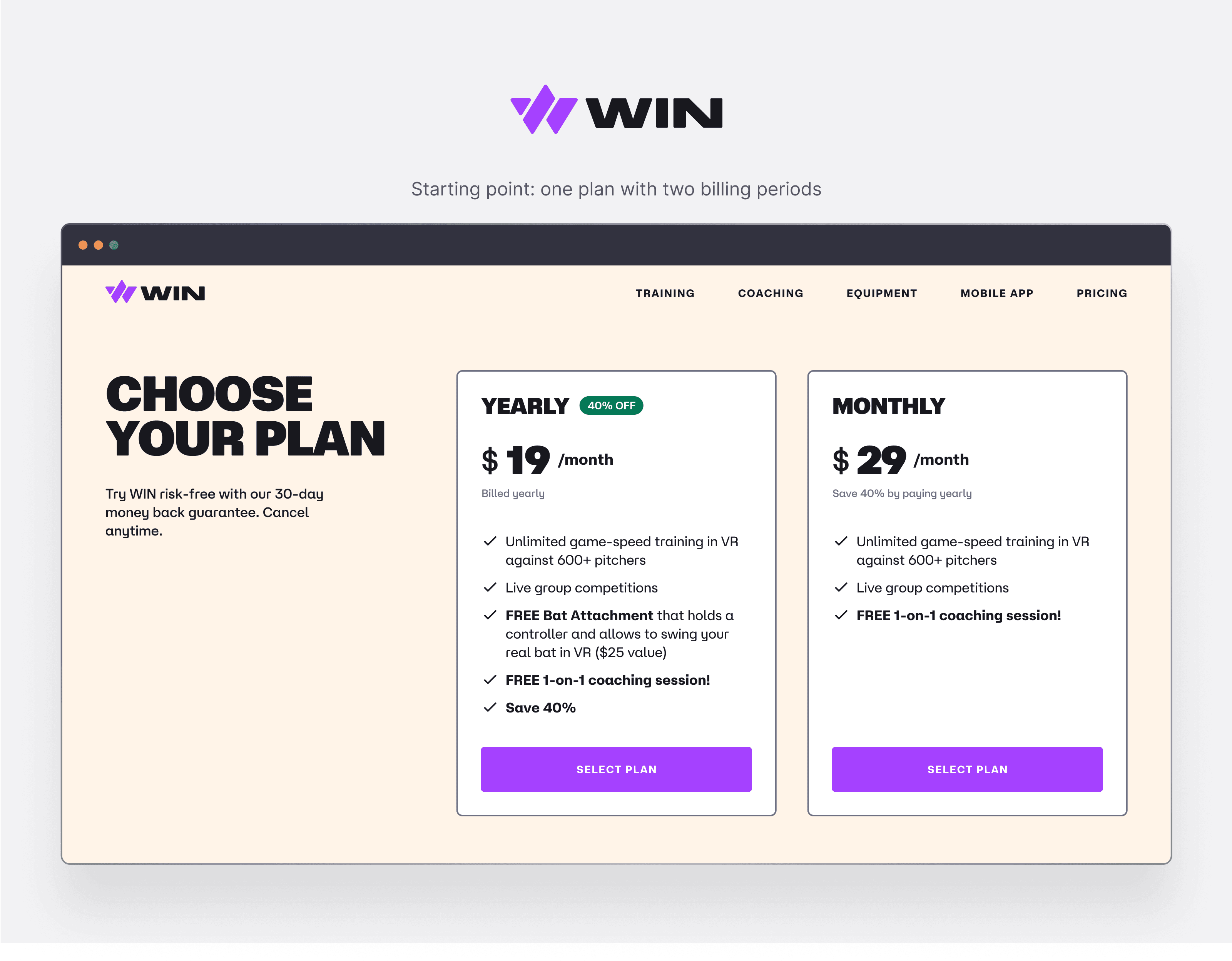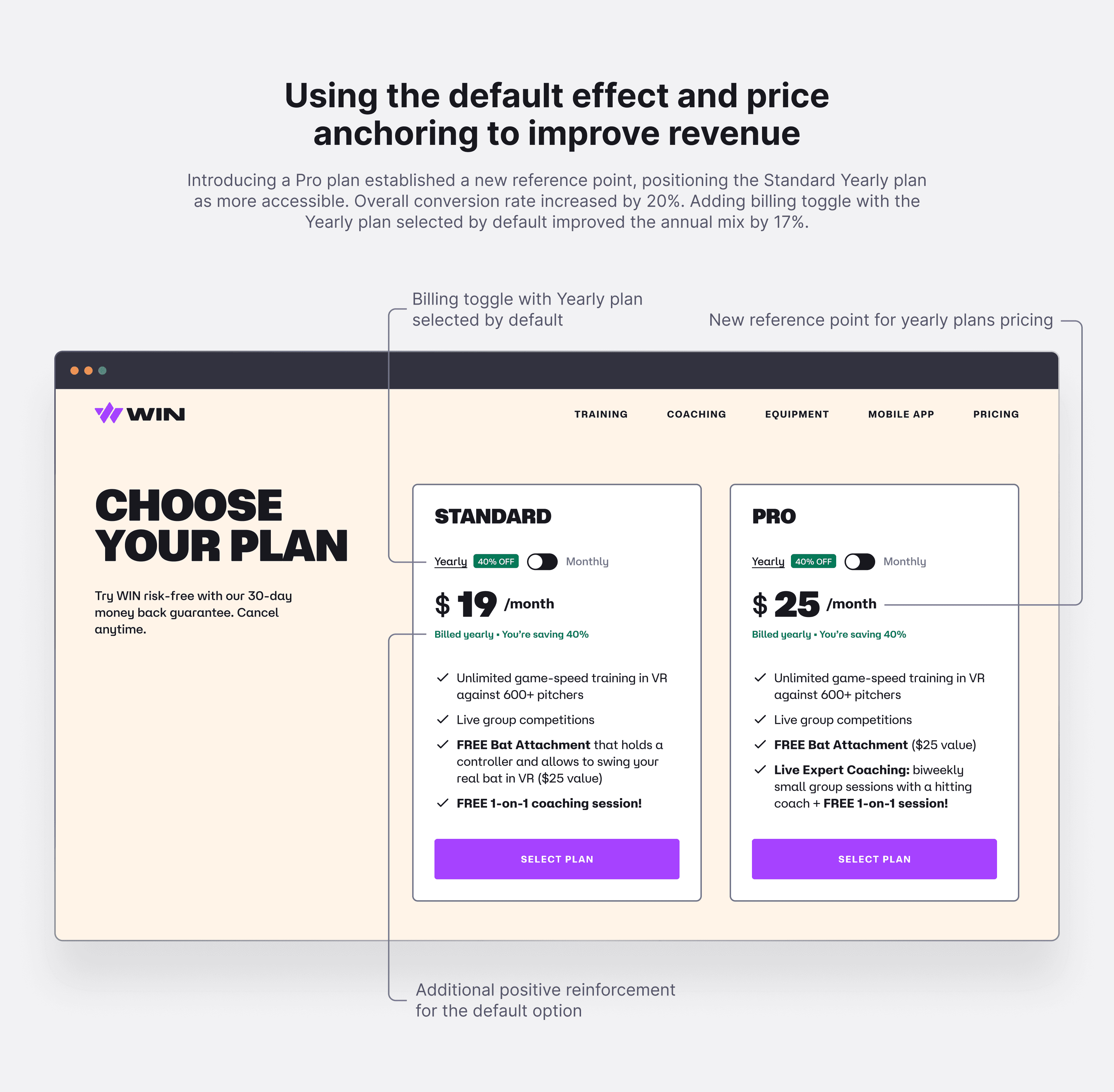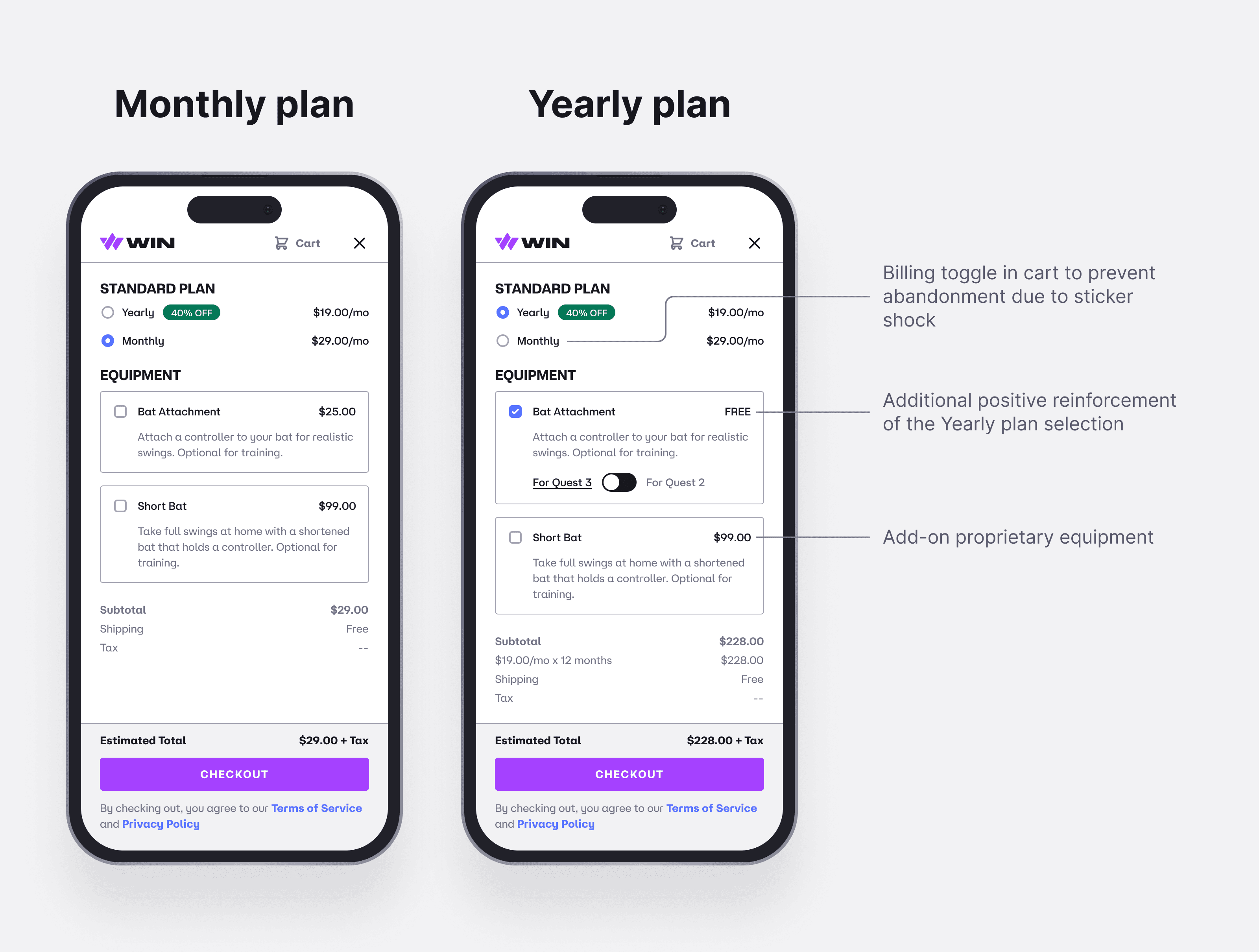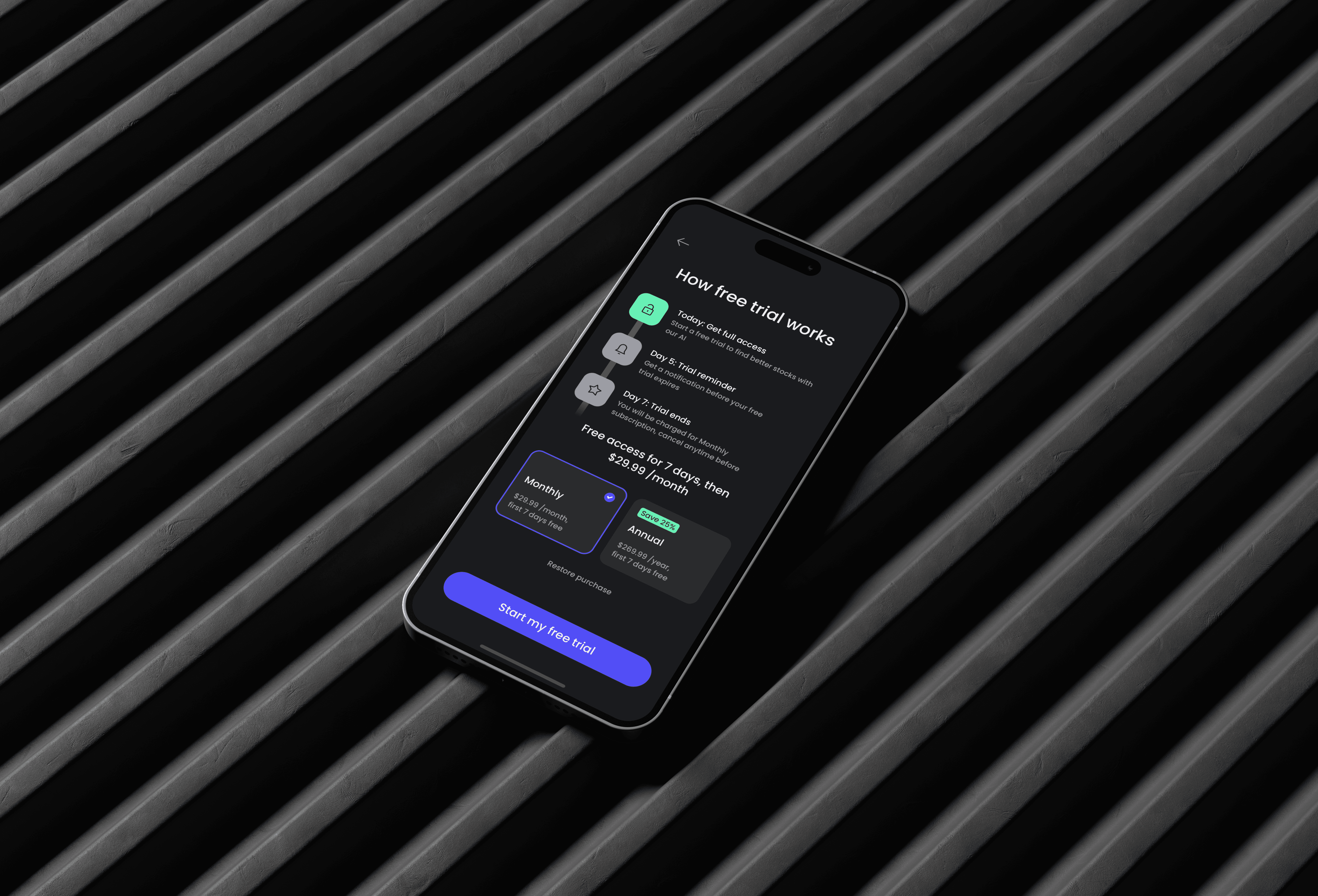WIN Reality | 2024 | winreality.com
Purchase flow optimization for WIN Reality
WIN Reality is a VR sports tech startup that uses virtual reality to train baseball and softball hitters, simulating real-life pitching speeds on Meta Quest headsets. I joined WIN Reality as its first product design hire.
Their core product is a VR application for Meta Quest. They also sell proprietary equipment for a more immersive experience and offer a companion mobile app with advanced stat tracking. WIN Reality sells subscriptions through the Meta Store and their website, each contributing roughly 50% of revenue. I worked across web, mobile, and VR, focusing on VR and website optimization.
This case study focuses on the website purchase flow optimization.
My role:
UI/UX
Team:
Alex Meakin – VP Marketing
Zack Kopstein – Product Manager
Jacob Goodman – Program Manager
I have omitted and obfuscated some confidential information in this case study.
Summary
Goal
Improve revenue and strengthen cash position by optimizing the web purchase flow.
Approach
Price Anchoring: we established a new price reference point by adding a new higher-priced plan.
Default Effect: we introduced the Yearly/Monthly toggles and defaulted them to yearly billing.
Results
Achieved a 20% increase in conversion rate, 17% increase in annual mix, and a 24% upsell rate for the new premium plan at checkout.
Goal: improve revenue and strengthen cash position.
Our goal
Our key tasks were to improve revenue and cash flow. Since WIN is a highly seasonal product, with most subscriptions purchased during the winter holidays, we focused on optimizing our purchase flow in advance to capture maximum revenue, which serves as a reserve for the rest of the year.
Key levers. There were several potential levers we could use:
Price. The company has experimented with product pricing in the past, and the current pricing was seen as optimal in terms of conversion rate, profitability, and price elasticity.
Quantity. In our case, this meant improving the conversion rate, which could be partially influenced by price or product marketing and presentation.
Product mix. This involved improving the annual mix of subscriptions and/or introducing new product variants.
The baseline
Historically, the company has always offered two subscription options: Yearly and Monthly, displayed side by side. The annual mix (share of the Yearly subscriptions vs Monthly) was considered a particularly powerful lever for improving revenue, as it significantly impacted the customer's LTV and cash flow.
Approach: establishing a new price reference point with a higher-priced plan, while also defaulting to annual billing.
Approach
After initial tests of copy and layout changes that delivered only marginal improvements, it quickly became apparent that we needed to make bigger bets to achieve meaningful change.
Since the company had already experimented with selling online coaching sessions from WIN baseball coaches as a separate product, which were sold separately from the subscription, we decided to bundle them into a new Pro subscription product at a higher tier.
This move would create a new price anchor, making the Standard Yearly subscription no longer the most expensive product. We also knew that people who took online coaching sessions with WIN coaches had better retention rates. Therefore, any potential cannibalization between the Standard Yearly and new Pro Monthly wasn't seen as big risk in terms of cash impact and LTV.
Additionally, we introduced the Yearly/Monthly toggles and defaulted them to yearly to exploit the default effect. Being able to choose between several options makes us feel in control. Yet, we tend to prefer the default option when presented with a selection of choices.
Default Effect: The default effect refers to our tendency to stick with the default option, even when a different choice might be better. Studies consistently show that people often accept the default option, which is the preselected choice, because it requires no effort to make a decision. Defaults can serve as a powerful nudge, especially when people are uncertain or hesitant to act. For example, Microsoft found that 95% of users kept default settings, even for critical features like autosave.
Anchoring Bias: Anchoring bias is a cognitive bias where we rely heavily on the first piece of information we receive about a topic, using it as a reference point for all subsequent information. This bias affects how we perceive the value of items and compare them to alternatives. Presenting more expensive items alongside more affordable options can influence perception of value.
Source: Handbook of Behavioural Economics and Smart Decision-Making
Results: achieved a 20% increase in conversion rate, 17% increase in annual mix, and a 24% upsell rate for the new premium plan at checkout.
Results
In our previous presentation of the plans, there was no default option. They were displayed side by side on desktop and stacked on top of each other on mobile. While the yearly plan was shown first, it was not pre-selected.
Defaulting the billing toggle to the Yearly plan increased the annual mix by 17%. Through testing, we confirmed that defaulting the billing toggle to the Yearly plan instead of the Monthly plan improves the annual mix by 40 percentage points (p.p.), equivalent to an additional $200,000 in cash for the company over the holiday period.
The overall conversion rate increased by 20% compared to the baseline, when we only had a standard plan with two billing cycles. 24% of users checked out with the Pro option, which improved revenue and profitability for the company.
Additional improvements in the cart
The increase in the overall conversion rate can be partially attributed to the additional billing toggle we added to the cart. This allowed users to change their plan to Monthly while in the cart, even after starting the checkout process with the Yearly plan. Previously, the checkout process was streamlined, and once you began checkout with the Yearly option, you couldn’t change it without abandoning the checkout altogether.
The new solution has proven to be a net positive when tested against the same option without the ability to change the billing period in the checkout after selection. It did not significantly affect the annual mix and "saved" around 6% of the users who experienced sticker shock after starting the checkout with the Yearly plan. The Standard Yearly plan requires a one-time payment of $228, which is a significant amount. This additional toggle may have been even more important for the Pro Yearly plan, where the one-time payment was $300.
Showing the Equipment options next to the Monthly/Yearly selection in the checkout helped emphasize the additional equipment included for free with the Yearly plans and promoted the sale of add-on proprietary equipment like the Short Bat. It had an attach rate of around 10%, which additionally boosted company revenue.




